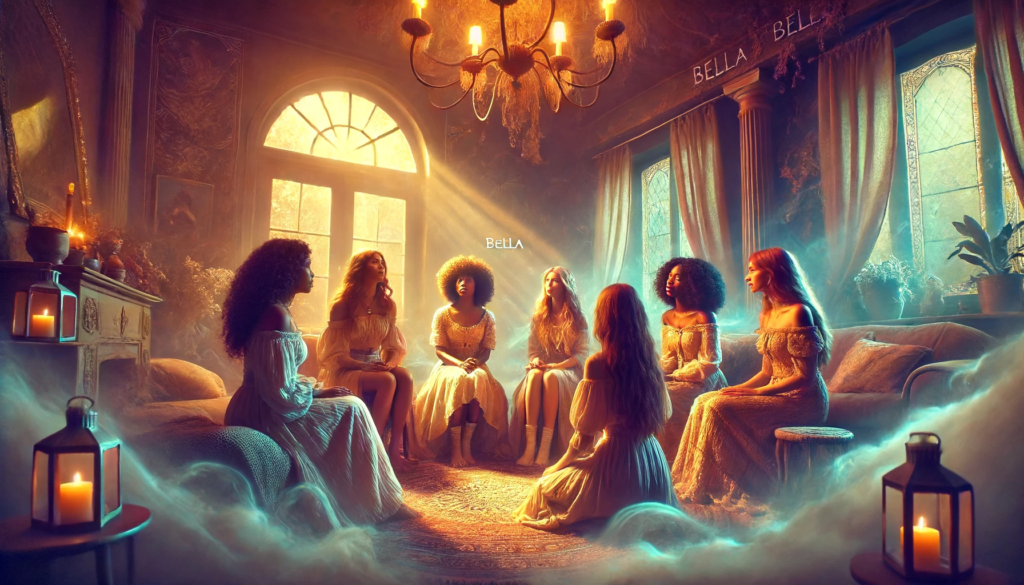As the sanctuary flourished, Bella began to form deep connections with the people in her rural town. She was particularly drawn to a small group of friends who had known each other since childhood but had never left the town. These friends were welcoming and curious about Bella’s sanctuary and the teachings she offered.
One of the friends, Rosa, was a gifted herbalist who had learned the craft from her mother and grandmother. Another, Mae, had a natural talent for weaving and creating beautiful tapestries that told stories of their heritage. The third, Clara, was a quiet but insightful woman who had a deep connection with animals and nature. Together, they formed a close-knit group that shared a mutual respect and a desire to learn from each other.
Bella discovered that these women also possessed spiritual gifts. Rosa’s herbal remedies were not just effective but had a touch of magic that made them extraordinarily potent. Mae’s tapestries seemed to come to life, their patterns shifting and changing subtly over time. Clara could communicate with animals, understanding their needs and feelings in a way that seemed almost supernatural.
Sign up to get new chapters in your inbox — about once per week!
The group met regularly at the sanctuary, where they shared their skills and supported each other in their personal growth. Bella taught them about business and mysticism, drawing on the teachings of Nic and Court and her own experiences. In return, they taught Bella more about the local traditions and the history of their town.
As they grew closer, the women began to notice the challenges their town faced. The older men who controlled the town were resistant to change and wary of outsiders. They saw Bella’s sanctuary as a threat to their authority and were determined to shut it down. The friends knew they had to act, but they also knew they had to be strategic.
Together, they devised a plan to challenge the old guard. They began by raising awareness about the benefits of the sanctuary and the positive changes it was bringing to the community. They organized events and workshops, inviting people to see for themselves the healing and learning that was taking place.
Rosa, Mae, and Clara used their gifts to support the effort. Rosa’s herbal remedies helped to build goodwill, as she provided free treatments to those in need. Mae’s tapestries, displayed in public spaces, told the story of their community’s rich heritage and the promise of a brighter future. Clara’s connection with animals helped to foster a sense of harmony and balance, as she organized programs to care for and protect the local wildlife.
The older men tried to fight back, but they found themselves outmatched by the determination and unity of Bella and her friends. The support from the community grew stronger, and the resistance from the old guard began to wane. The friends’ strategic efforts paid off, and they gradually won over even the most skeptical members of the town.
Bella and her friends had not only protected the sanctuary but had also brought the town together in a way that hadn’t been seen in years. They had proven that change was possible and that the power of unity and shared purpose could overcome even the most entrenched opposition.
The stories presented in this book are inspired by real-life events and personal experiences. While the essence of these experiences remains true to life, the names of individuals and some locations have been changed to protect privacy. Certain elements have been fictionalized to enhance the narrative and provide a cohesive storyline.

